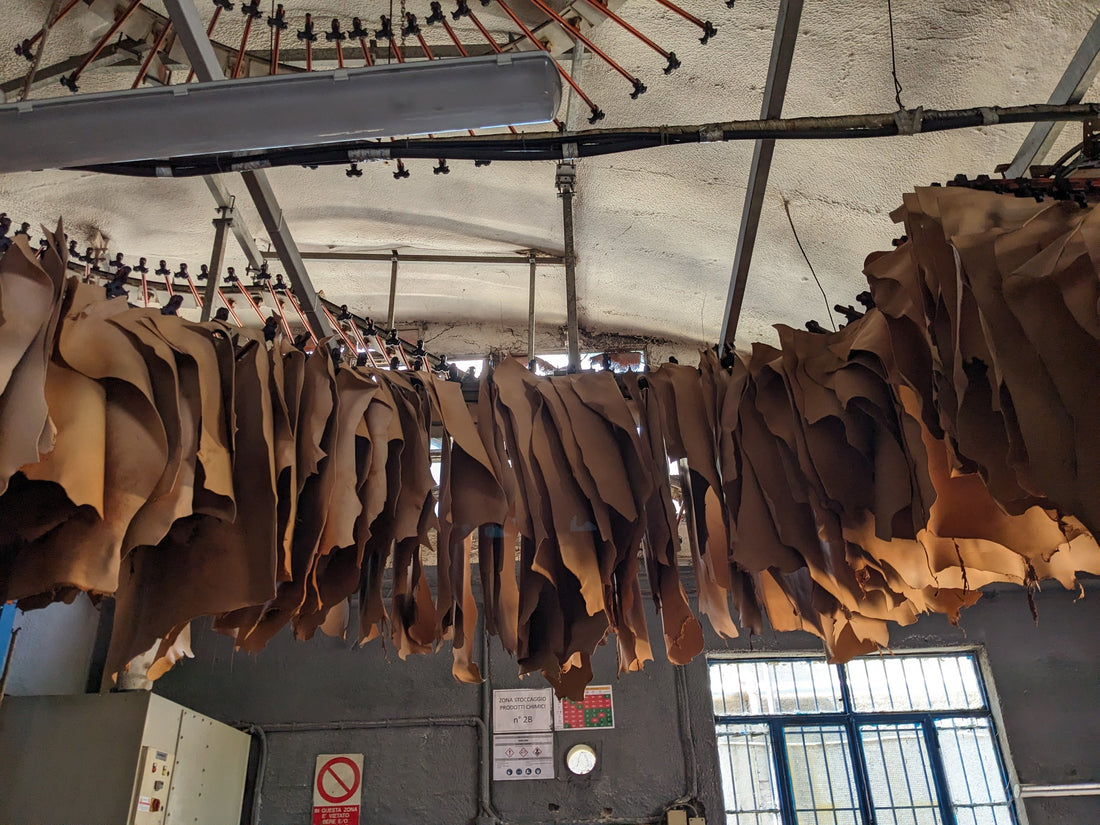
Is vegetable tanned leather actually better than chrome tanned?
The short answer is no. They are different materials for different purposes.
And the long answer would be that I strongly prefer vegetable tanned leather, but for very specific reasons. So let's explore these reasons and common misconceptions from a point of view of a nerdy leatherworker.
Misconceptions about chrome tanned leather:
- There are different environmental impacts, but it's not as definite. For example, vegetable tanning takes a lot more time and uses a lot more water and energy. Chrome tanning produces more toxic waste.
- Chrome leather is not just less durable, it has different properties and it is lot more resistant to water, oil, and sun damage.
- Chrome leather can have a lot of vegetable tanned leather properties if it's re-tanned. Like Chromexcel leather by Horween or Latigo and combi-tanned leather. It can have pull-up oil effect too, like cheap Crazy Horse leather (and it's not made from horse hides, but that's another topic).
- Chrome tanning might be necessary for certain uses and applications, especially for garments when you need strong and very soft material, like nappa leather. Or when you need white leather without a heavy pigment paint.
What are the real reasons to love vegetable tanned leather?
- Tradition! It's still produced by family-run and small tanneries with a lot of care. It takes more time and effort to produce vegetable tanned leather. And to me this type of care is very important.
- It ages beautifully with patina and color changes. This also makes it less predictable and less suitable for mass production, it feels more alive.
- Since it's an expensive leather, it's easier to find higher quality cuts with full grain texture. So you can see and feel all the imperfections of the hide.
- It has this almost addictive smell and hand feel. Even glazed or embossed vegetable tanned leather has very special tactile quality to it.
- Sun, oils, hands, water, everything affects and changes it. You can wet mold vegetable tanned leather, carve it, it has a lot of features sought after by artisans.
- It may seem that it's hard to take care of since it is so alive and unstable. But actually, these are the qualities that help it to be so durable. For example, the scratches can be corrected and buffed out, while the damage to chrome tanned leather might be permanent.
- Factories and artisans who work with such leather also prefer more natural finishes with drum-dyed, hand-dyed, or even object-dyed with soluble stains and paint. More often, it's without a heavy pigment layer.
A lot of these differences are cultural and based on the context and use of leather. And anything can be exploited for marketing and profit.
Just it happens that vegetable tanned leather feels a lot more alive and can be used to create heirloom objects.
Here's a short video from a visit to one of my favorite tanneries in Italy, Conceria La Perla Azzura:
